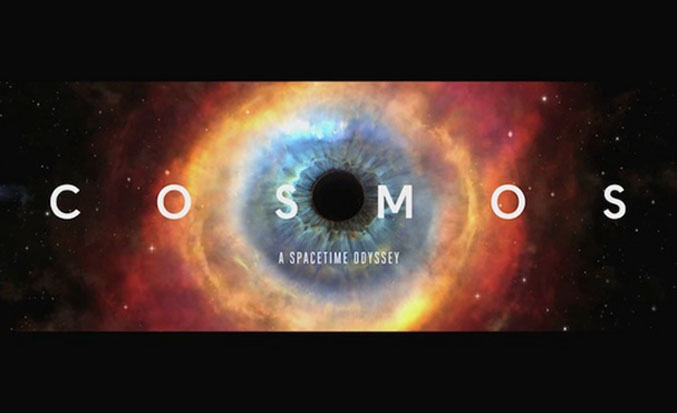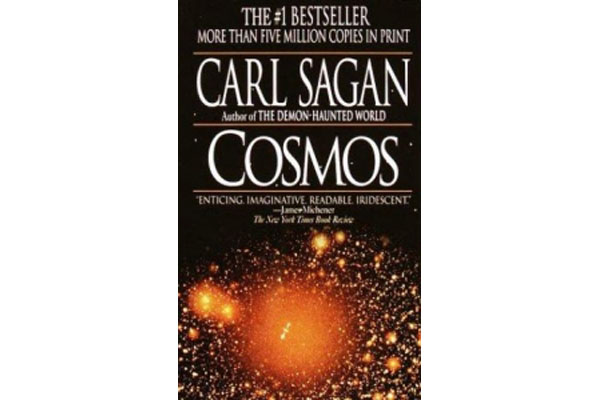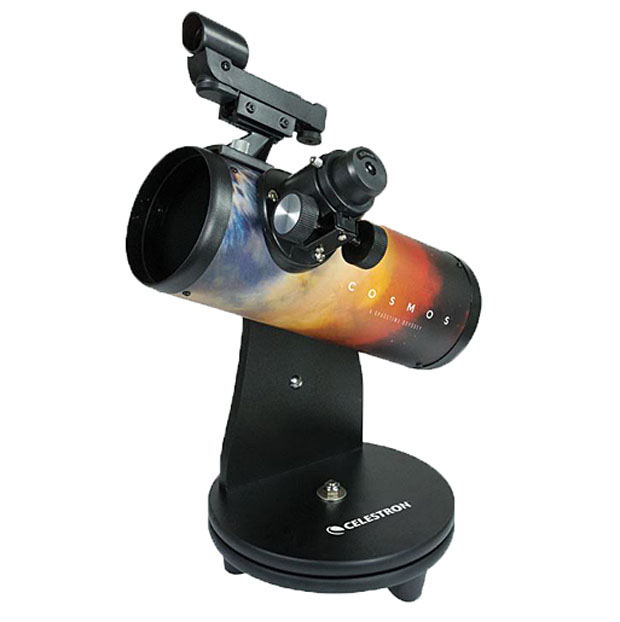'Cosmos' Recap: 7 Things We Learned in Last Night's Premiere

"Cosmos: A Spacetime Odyssey" premiered Sunday night (March 9), rebooting the series that the late astronomer Carl Sagan turned into a TV classic 34 years ago.
Against a backdrop of sleek graphics and astronomical imagery, host Neil deGrasse Tyson brought a new generation of viewers up to speed about our place in the cosmos. In the hour-long premiere, Tyson broke down each line in our cosmic address, from Earth to the farthest reaches of the observable universe, and he time-traveled through the cosmic calendar from the Big Bang to the present.
Some of these morsels may be old news for veteran "Cosmos" fans and space buffs, but here's seven awesome things we learned in the series premiere:
1. Jupiter has hurricane three times the size of Earth
Starting with Sagan, "Cosmos" has a long tradition of throwing Earth into scale. The first episode of the new series showed that even within our own solar system our home planet looks relatively small — especially compared to Jupiter.
"With its four giant moons and dozens of smaller moons, Jupiter is like its own little solar system," Tyson said. "It has more mass than all of the other planets combined."
Tyson then pointed out the gas planet's Great Red Spot, a hurricane three times the size of Earth that's been plaguing Jupiter for centuries.
Breaking space news, the latest updates on rocket launches, skywatching events and more!
2. Our solar system has a huge shell that no one can see
Our solar system is enclosed by a swarm of icy bodies known as the Oort cloud, but as a whole, this shell is imperceptible to humans. That's because these comets — leftovers from the solar system's formation — are separated from each other by hundreds of millions of miles.
"Each one of these little worlds is as far from it's nearest neighbor as Earth is from Saturn," Tyson said.

3. Our universe may be part of a multiverse
The "observable universe," is listed as the last line in our cosmic address (Earth is first) in the inaugural episode of the new "Cosmos." But as Tyson says, this may only be our cosmic horizon.
"Many of us suspect that all of this — all the worlds, stars, galaxies and clusters in our observable universe — is but one tiny bubble in an infinite ocean of other universes," Tyson said. In other words, we could be living in a multiverse.
4. Our cosmic perspective is relatively new
Cosmically speaking, it wasn't so long ago that humans thought Earth was the center of the universe. (Actually you can still find humans who believe this; a recent survey found that 1 in 4 Americans thinks the sun revolves around Earth.)
"Cosmos" illustrates just how dangerous it was to challenge cosmic mores a mere 400 years ago through the tale of Italian philosopher Giordano Bruno (voiced by executive producer Seth MacFarlane). Bruno suggested that we live in a boundless universe, orbiting one of many stars. His reward? Imprisonment and a fiery death at the stake.
5. In the cosmic calendar, Jesus was born just 5 seconds ago
Those who watched Sagan's original series will remember the cosmic calendar, which is a way to conceptualize the age of the universe (13.8 billion years). Tyson revived the tool, explaining that Jan. 1 would mark the Big Bang and the present falls on midnight on Dec. 31. At this scale, every day represents nearly 40 million years and humans only evolved in the last hour of New Year's Eve.

6. Carl Sagan and new "Cosmos" host Neil deGrasse Tyson go way back
One poignant moment in the "Cosmos" premiere occurred at the end, where host Neil deGrasse Tyson touched on Sagan's legacy in astronomy and science communication. Tyson showed a day calendar from 1975 - Sagan's own daily planner - with a meeting with Tyson penned in on a Saturday. Sagan had invited the then 17-year-old Tyson to Ithaca, N.Y., where Sagan taught at Cornell University, for a visit. It was snowing when the young Tyson went to catch the bus back home to the Bronx. Sagan gave Tyson his home phone number, and invited the student to call him if the bus didn't show and spend the weekend with his family. ""I already knew I wanted to become a scientist, but that afternoon I learned what kind of person I wanted to be," Tyson said in the premiere.
7. We are made of star stuff
Long-time "Cosmos" fans were waiting for this moment and Tyson delivered.
He explained that the stuff of life and the elements familiar to us on Earth today were cooked inside the hearts of collapsing stars billions of years ago.
"They get so hot that the nuclei of the atoms fuse together deep within them to make the oxygen with breathe, the carbon in our muscles, the calcium in our bones, the iron in our blood," Tyson said. "You, me, everyone: We are made of star stuff."
The premiere of "Cosmos: A Spacetime Odyssey will re-air tonight at 10 p.m. ET/PT on the National Geographic Channel and include some extra material on the making of the show.
Follow Megan Gannon on Twitter and Google+. Follow us @SPACEdotcom, Facebook or Google+. Originally published on Space.com.
Join our Space Forums to keep talking space on the latest missions, night sky and more! And if you have a news tip, correction or comment, let us know at: community@space.com.

Megan has been writing for Live Science and Space.com since 2012. Her interests range from archaeology to space exploration, and she has a bachelor's degree in English and art history from New York University. Megan spent two years as a reporter on the national desk at NewsCore. She has watched dinosaur auctions, witnessed rocket launches, licked ancient pottery sherds in Cyprus and flown in zero gravity on a Zero Gravity Corp. to follow students sparking weightless fires for science. Follow her on Twitter for her latest project.
